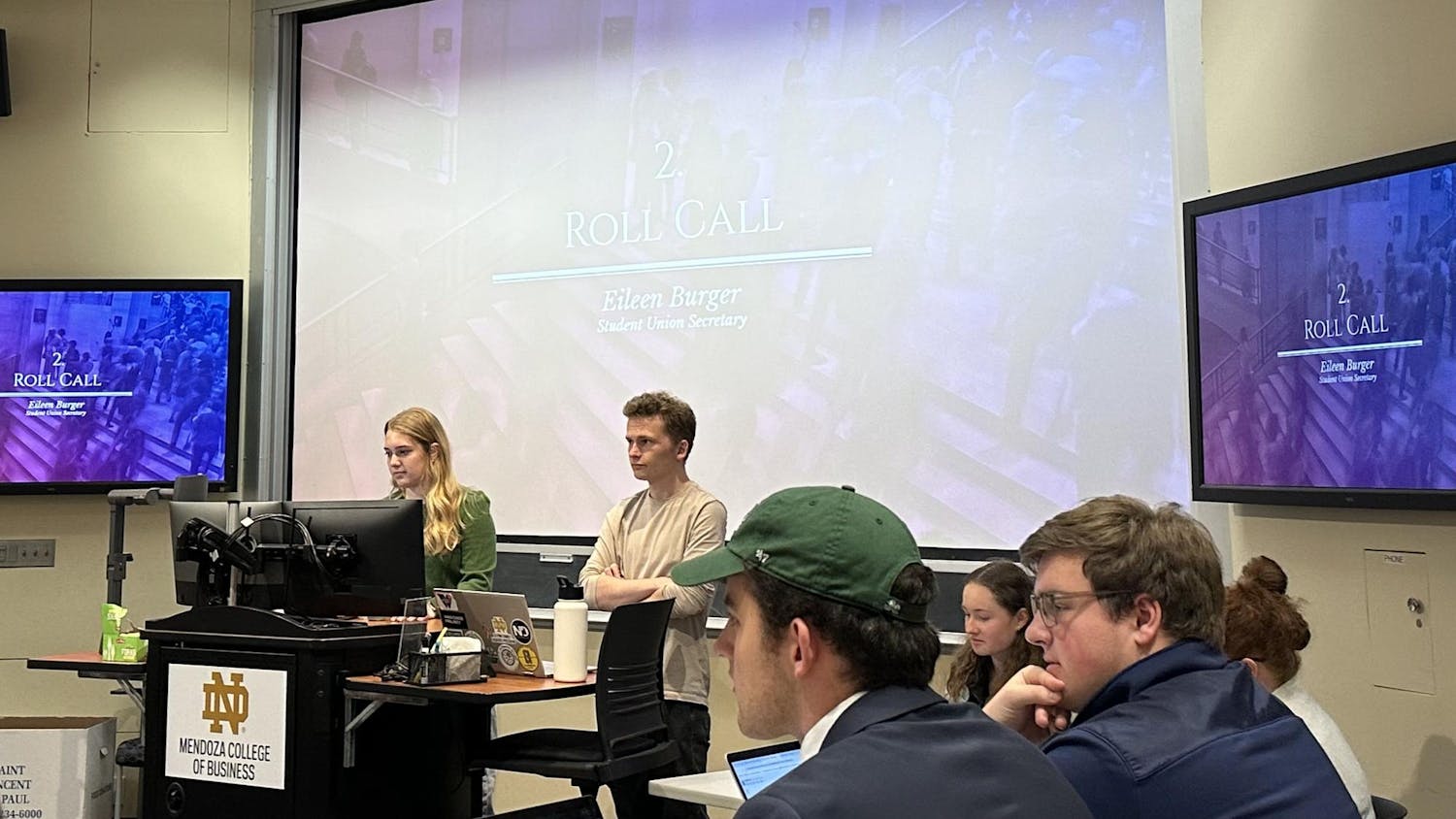Michael Subialka, Research Fellow in European Literature at St. Hugh’s College, Oxford, gave a lecture titled, “Modernism at War: Pirandello and the Crisis of Cultural Identity,” in the Hesburgh Library on Monday.
Subialka said performing artists understand the depth and breadth of 20th century Italian playwright and dramatist Luigi Pirandello’s work.
“We have a vision of Pirandello … as an innovator who changed the way in which the stage was perceived, and the way in which the actor and director could use the stage to reflect on the process of making art itself,” Subialka said.
Subialka said this understanding of Pirandello was formed in part by Adriano Tilgher, a critic who presented Pirandello’s thought as a dichotomy of life and form.
Although he agreed with Tilgher’s analysis, Subialka said that it obscured certain aspects of Pirandello’s views.
“We think of Pirandello especially in terms of this idea of identity crisis, a crisis that in modernism becomes a crisis of representation,” Subialka said. “But I want to suggest that this crisis of the individual subject is also connected to a crisis of ... cultural identity and that this comes to head in some of the writings he wrote during the Great War.”
Subialka said one of Pirandello’s most prominent works, Six Characters in Search of an Author, is the ideal starting point for understanding the author’s view on identity crisis.
“In Six Characters in Search of an Author, you have a crisis of identity that is played out in six different instances,” Subialka said. “You have these six characters … who interrupt a rehearsal for one of Pirandello’s other works … and they try to tell their story.”
Subialka said these characters, unable to identify with the actors onstage who attempt to portray them, are driven to an identity crisis.
“At the same time they don’t recognize themselves as actors, and the actors’ attempts to replicate each aspect of the story that they each see as their own … so there is … this driving internal need to communicate,” Subialka said.
Using this illustration of meta-theater, Subialka said that one of Pirandello’s central concerns was the question of what it meant to be a person, and how others’ perception of one’s person differed.
“Pirandello seems to think that who you see yourself as is never the same thing as what other people see you as … that others fix you in certain perspectives in a way of being that’s relevant to your life,” Subialka said.
Due to the constantly changing nature of life these external perceptions ultimately influence individuals, Subialka said.
“When we create identities — say an accountant or … businessman — that identity takes certain aspects of that mutable thing and then fixes them,” Subialka said.
Theater is a particularly conducive medium to portray the conflict between impermanence and identity, Subialka said.
“The theater, in certain respects, is able to overcome that conflict, because it’s both fixed — there is a script and there is a story — but at the same time every time it’s performed, it’s new,” Subialka said. “It doesn’t just exist, it has to be embodied by actors and each time they do it, they’re going to be different … There’s something transformative about it.”













